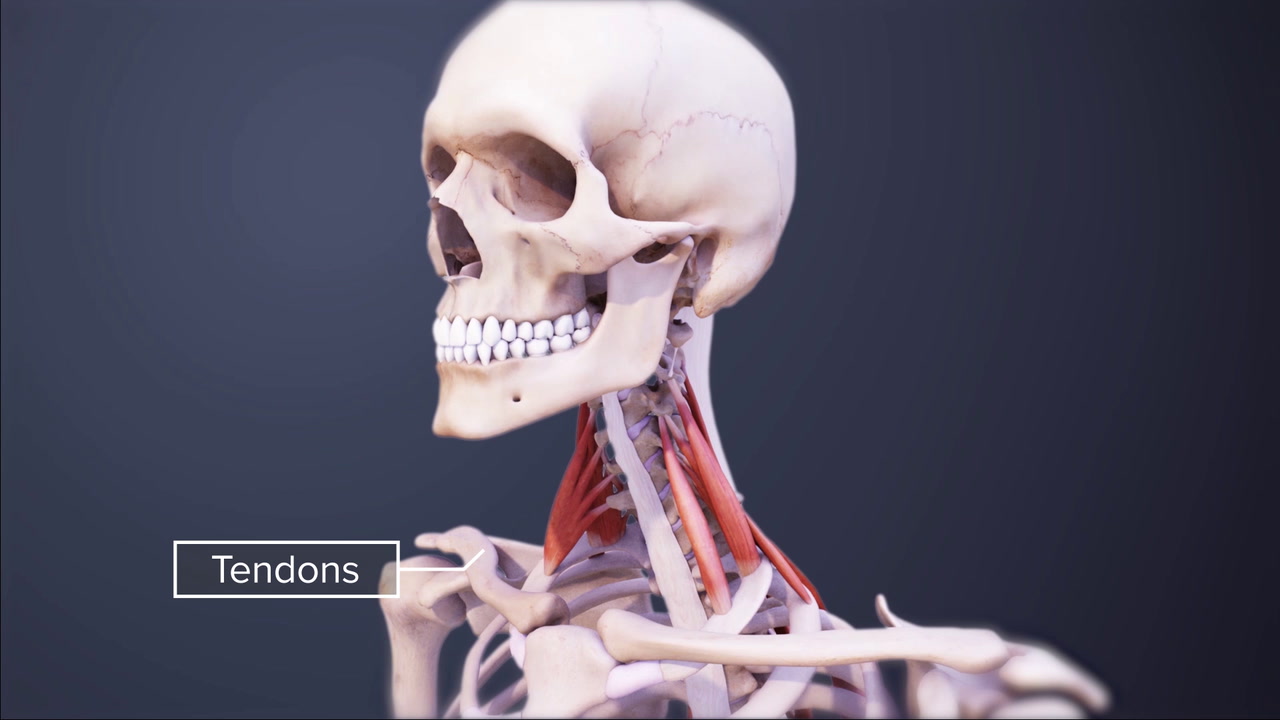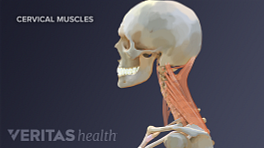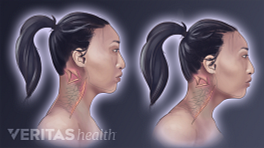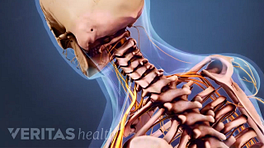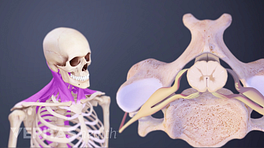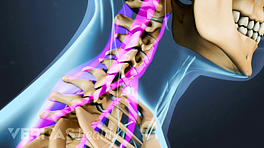Neck muscles work together with tendons and ligaments to support and move the neck and head. Tendons are connective tissue that attach muscle to bone, whereas ligaments attach bones to other bones.
Some common muscles involved with neck pain include the sternocleidomastoid, trapezius, levator scapulae, scalenes, deep cervical flexors, erector spinae, and suboccipitals. Let’s take a closer look.
The sternocleidomastoid muscle, commonly called the SCM, attaches to the bony mastoid process on the skull and travels down the front of the neck to connect to the sternum and collarbone. The SCM muscle can help in head rotation and tilting the chin. The SCM is a large muscle that also helps protect fragile structures within the neck.
The trapezius is a large surface muscle that spans from the base of the skull down the spine to the mid back, as well as out to the shoulder blade. The trapezius muscle has 3 parts: upper, middle, and lower. It can help extend the head upward and neck backward, rotating/turning the head, or lifting and/or depressing the shoulder blade.
The levator scapulae muscle attaches to the top four cervical vertebrae and runs down the side of the neck to where it connects with the top of the shoulder blade. This muscle helps with lifting the shoulder blade, bending the neck to the side, and rotating the head.
The scalene muscles are 3 pairs of lateral neck muscles that connect the mid and lower cervical spine with the top of the rib cage. The anterior and middle scalenes attach to the first rib, while the posterior scalene attaches to the second rib. The scalene muscles help with neck flexion and side bending.
The deep cervical flexors are a muscle group consisting of the longus capitus and longus colli muscles, which run down the front of the cervical spine. The deep cervical flexor muscles help flex the neck forward as well as stabilize the cervical spine.
The erector spinae are a group of many muscles that attach along the back of the spine. In the cervical spine, the erector spinae muscles play key roles in supporting posture, rotating the neck, and extending the neck backward.
The suboccipital muscles are 4 pairs of small muscles that connect the top of the cervical spine with the base of the skull. The suboccipitals are needed for head extension and rotation.
Strain to a neck muscle can cause pain, tightness, and possibly lead to a stiff neck. Most neck strains start to feel better within a few days, but sometimes they can last much longer depending on the severity.
